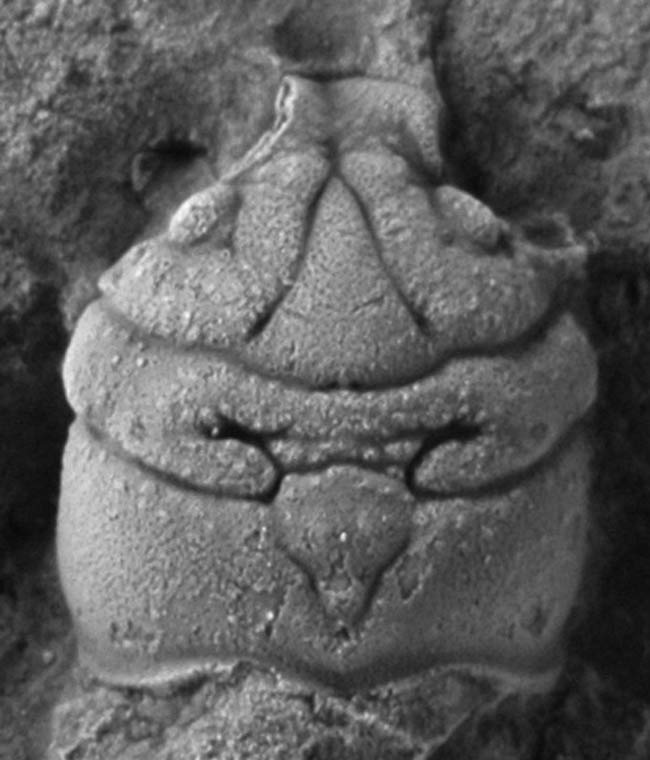Ancient, Legless Crab Discovered

A fossil of a new crab species reveals the itsy-bitsy crustaceans inhabited towering sponge reefs during the Jurassic Period, where they made tasty snacks for ichthyosaurs and other ancient reptiles.
The fossil was discovered in eastern Romania within cylindrical reef structures about 100 feet (30 meters) across and just as tall, which were once blanketed by deep ocean. It represents a new species within the oldest lineage of true crabs that lived 150 million years ago when dinosaurs walked the Earth.
Dubbed Cycloprosopon dobrogea, the primitive crab was built for sidling in and out of crevices in reefs, with a flattened body just under a half-inch (6 millimeters) long. Exactly how the crab moved about, however, is not known, as this species and other family members had no legs extending from the carapace, or outer body covering.
"They probably were hiding in the small cracks and crevices within the sponge reef itself," said lead researcher Carrie Schweitzer, a geologist at Kent State University in Ohio.
The underwater hideouts would've proved critical to survival in the face of ancient reptiles nosing around for tasty morsels.
"These crabs in the Jurassic were living in much deeper water than a dinosaur would've been, but something like an ichthyosaur or a plesiosaur would certainly have been eating crabs," Schweitzer told LiveScience.
Schweitzer has uncovered other Jurassic crabs in this area and elsewhere, indicating, she says, that the crustaceans were much more diverse and plentiful than scientists had thought.
Get the world’s most fascinating discoveries delivered straight to your inbox.
- Rumor or Reality: The Creatures of Cryptozoology
- 10 Amazing Things You Didn't Know About Animals
- Image Gallery: Under the Pacific
Jeanna Bryner is managing editor of Scientific American. Previously she was editor in chief of Live Science and, prior to that, an editor at Scholastic's Science World magazine. Bryner has an English degree from Salisbury University, a master's degree in biogeochemistry and environmental sciences from the University of Maryland and a graduate science journalism degree from New York University. She has worked as a biologist in Florida, where she monitored wetlands and did field surveys for endangered species, including the gorgeous Florida Scrub Jay. She also received an ocean sciences journalism fellowship from the Woods Hole Oceanographic Institution. She is a firm believer that science is for everyone and that just about everything can be viewed through the lens of science.
 Live Science Plus
Live Science Plus





